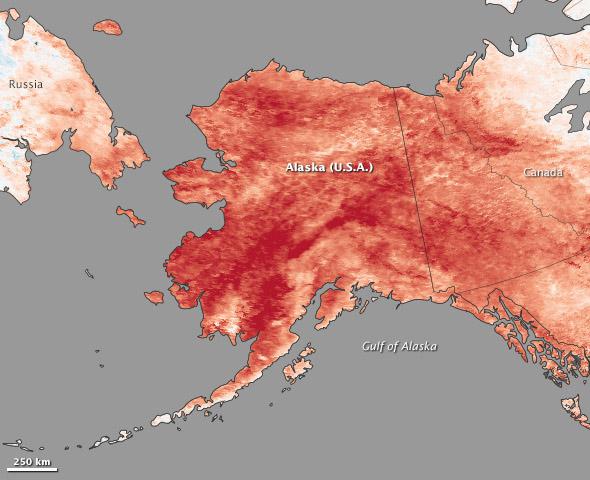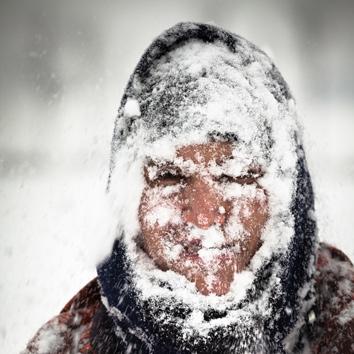In yesterday’s post about Arctic ice melting away, I started writing a little bit about the “polar vortex” but decided it needed its own post. There’s a thing that’s been bugging me about it for a while, and now’s as good a time as any to clear it up.
People have been using the term “polar vortex” to describe the sudden and sometimes vicious drop in temperatures we’ve been experiencing in the U.S. east. However, this is a misnomer. Despite the bloviations of Rush Limbaugh (who recently doubled down on his denial dumbosity), the term “polar vortex” has been around for decades, and it refers to the circulating wind pattern centered roughly over the North Pole (a vortex is any sort of circulating fluid, and in this context we’ve seen polar vortices on Saturn—and they’re gorgeous— Titan, and even Mars and Venus).
The details are complicated, but the vortex is bounded on its south edge by a jet stream of air. This is not a constant, steady flow of air that keeps the vortex sharply defined; it’s not like north of a certain latitude you can say, “Here be vortex.” The jet stream meanders north and south depending on lots of factors, giving the boundary a wiggly appearance. Sometimes the jet stream can weaken, and the meanders can become large. When this happens, a big ol’ clump of frigid Arctic air can drop south, and sometimes very far south.

Photo by NASA’s Goddard Space Flight Center
This is what happened in January 2014, when a blast of boreal air came rolling Dixieward, dropping a large swath of the central U.S. into deep freeze (though I’ll note the connection between these excursions and the vortex itself can be more complicated). This of course prompted every climate change denier into claiming this disproves global warming.
But that’s crap. For one thing, many of them forgot (or were hoping their audience would forget) that while it’s winter in the Northern Hemisphere, it’s summer in the south, and Australia has been seeing record heat. Very record heat.
But we need not travel so far to see the deniers’ claim is bull. If you look to Alaska, they too were having record warmth while the Midwest was freezing. That’s because of that same meander in the vortex; sometimes it brings cold air south, but it can also bring warm southern air to the north. In late January, some parts of Alaska were an amazing 18° C (32° F) warmer than usual!*
The high temperatures were exacerbated due to the persistent ridge of high pressure that prevented the cooler air from coming back; we saw the same thing happen in Alaska in the summer of 2013.

Photo by Jesse Allen and Jeff Schmatltz, using data from the Land Processes Distributed Active Archive Center (LPDAAC) and the LANCE/EOSDIS Rapid Response.
My point? One is that any of the periodic bitter cold snaps brutalizing the U.S. shouldn’t actually be called a “polar vortex”; instead they’re due to a southern excursion of the vortex. That’s a bit of a nitpick, I admit, but in this case it gave me an excuse to go into a little scientific detail of the situation. And second, these cruel drops in temperature in no way disprove global warming (despite what non-climate-scientist Ted Cruz keeps saying long after he’s been thoroughly debunked).
And finally, while these meanders may not be accelerated or created by global warming, there may yet be a connection. I’ve written about this before; warming water in the Arctic leads to ice loss which leads to more warm water. Some climate scientists think this may be disrupting the air flow in the polar vortex, which in turn leads to the meanders in the jet stream. This idea is pretty new, and not yet verified. But the irony is clear: If these scientists turn out to be right, not only does the cold weather not disprove global warming, it may actually be caused by it.
Not-so-incidentally, there’s a prediction that we’ll be seeing another southern excursion of the vortex next week, and the Midwest can expect more ridiculous temperatures … just as we can expect more ridiculous claims about those temperatures. But just because some folks stick their fingers in their ears to escape reality doesn’t mean we all have to.

Photo from icanhascheezeburger.com
*Correction, Feb. 21, 2014, at 16:00 UTC: In the original text I converted the change in temperature from Celsius to Fahrenheit incorrectly; I did it as a conversion of temperature instead of a change in the temperature. A change of 18° C is a change of 32.4° F, not 60. My apologies for any confusion.
